Gamified apps for weight loss, no crash dieting.
I have blogged several times about shedding December fat and so far, this is probably my healthiest tweak on my routine. Just to summarize, I have had a knee injury since 2012 and would develop a foot injury called plantar fasciitis every time I go 5 pounds beyond my normal weight. In the previous years, I have done intermittent fasting and sticking to carbs with low glycemic index.
I had lived a relatively unhealthy 2015 so my December 2014 weight actually stuck around and then gained some. By Christmas 2015, I was 4 pounds overweight (at 125.6 lbs) and my feet were literally killing me. So I started losing weight again by January 1.
Let me just get this out right off the bat: I dislike calorie counting immensely. I repeat: I dislike calorie counting immensely. But this app, MyFitnessPal (MFP), made it easy for me.
I felt that it was gamified and it certainly brought out the competitive gamer in me. The formula is simple: if I wanted to eat more, I will just need to move more. Whenever I did some exercises, it adjusts my calorie allowance to make sure I’m eating enough.
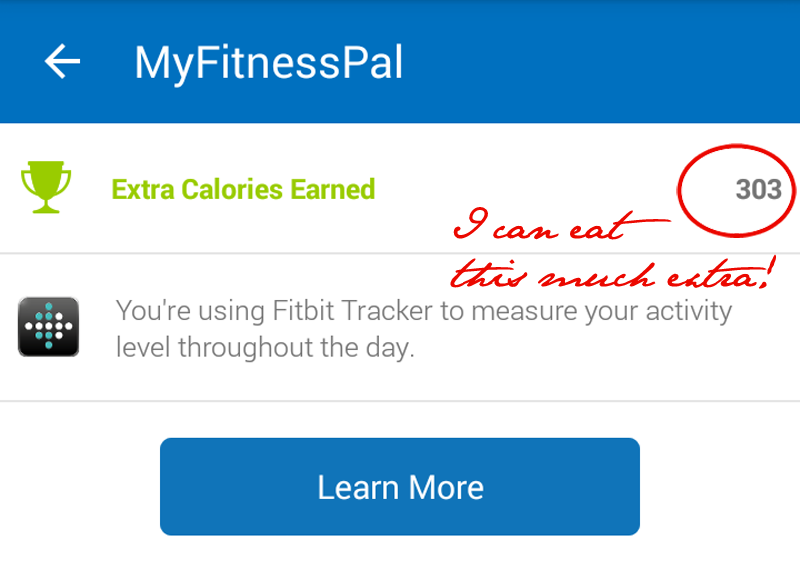
 At first it seemed like, ok, just something that counts calories but as I weighed myself everyday (instead of the recommended once a week), I learned how to tweak my nutrition to find out what worked best for my build.
At first it seemed like, ok, just something that counts calories but as I weighed myself everyday (instead of the recommended once a week), I learned how to tweak my nutrition to find out what worked best for my build.
And this is what I learned:
Your calorie burn depends on how much you weigh.
As soon as you enter your starting stats into your MFP profile, it will recommend your nutrition allowance. I weighed myself everyday because you actually lose more calories the heavier you are. Of course, that’s because you’re carrying more weight than you should. So the same workout routines that you did at 120 lbs will not burn as much as when you weigh 115 lbs. In my case, I get bored easily so I frequently changed my routines.
Excessive sodium intake contributes a lot to weight gain as it makes you retain water.
MFP’s daily recommended intake is 2,300mg of sodium. I cut that to about 1,500mg for me. (Do not ever go below 500mg of sodium or you will start complaining about lack of mobility.) Two things happened:
1. I lost 7 pounds on the first week. That was all water weight. The puffy cheeks and bloated look also went away on the first week.
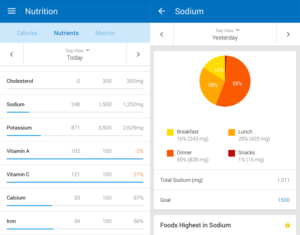
2. I stopped feeling like I had UTI everyday. Balisawsaw (dysuria)? I had that almost everyday. But once I started cutting back on sodium, the painful feeling in my lower abdomen just stopped.
I didn’t want to overexercise (I already hate exercising in the first place) so I also wanted to know if my regular daily activities had an effect on my calorie burn. LOL. When I bought the Fitbit Flex wristband twenty days later, I found out that yep, it certainly does.
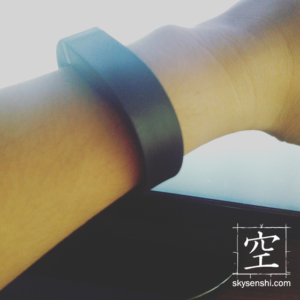
Here’s what I found out upon slapping this on my wrist:
Teaching burns calories as if you were brisk walking.
For the same number of hours, I might add. Probably because ever since I started doing cardio for 30 minutes in the morning, I have been very energetic and cheerful. I teach 1-3x a week, depending on my trimestral load. The rest of the week as a game developer, I’d be fairly sedentary.
Riding the MRT/LRT burns as much as 300-800 calories.
This means that as soon as you step into the warzone called the MRT (LRT is not as bad), you start sweating while concentrating on your balance. I stopped taking Uber when going to school and I made sure that my schedule isn’t rush hour, so I won’t get stressed at the sight of so many people. I also opted to stand as much as I can.
Now, I need a separate blog entry for Fitbit because there are downsides to it, especially as it made me work harder than MFP ever did. But if MFP brought out the competitive gamer in me, Fitbit is a whole new level of gaming entirely. I was competing against fellow game developers for badges and ranks on the leaderboards.
FitBit Flex is like an advanced pedometer that tracks your steps and your calories burned. And because I weighed myself everyday, if I ever got lighter, it means I will be burning less calories than I did the days before.
For the first week, I ended up becoming too active but with very little nutrition, which is one of Fitbit’s Flex’s weaknesses. At this point, I already realized I should have bought the Fitbit Charge HR, which was more suited to my lifestyle. (Update: I upgraded to Charge HR a couple of months later and gave my Flex to my boyfriend.)
In any case, after adjusting to Fitbit, here are the new things that my body craved:
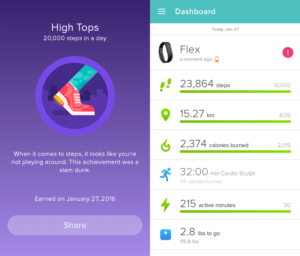
Protein.
Lots of it. I couldn’t get enough of it. And the right kinds, too. I found out that I’d remain fuller by eating a Kenny Rogers steak meal (with steamed vegetables for sidings) than eating a McDonald’s Big N Tasty sandwich. Not only is the former more fun to eat, it’s also not drenched in sodium the way McD’s offerings are. Aaand of course, I always match my protein with carbs that have low glycemic index.
 Intermittent Fasting
Intermittent Fasting
I had done this in 2014 with the 6:1 diet. But MFP would not allow me to go under 1,000 calories. And in hindsight, I realized I didn’t want to starve so much in one day. What I do now is eat my last meal at 6PM and break my fast at 8:30AM after my cardio. Food is like my reward. And yes, you can enjoy that half a cup of ice cream at night (I did!!) and still lose weight in the morning.
Vitamins
I always forget to take vitamins, especially of the tablet kind. When I mistakenly bought a vegetarian protein shake from GNC — I was looking for a meal replacement but this one is not it — I ended up with a shake that was supplementary. My morning white/chamomile tea habits changed yet again. I now mix this with white or chamomile tea to make a total of two cups per serving. This is now my vitamins, which I drink after breakfast.
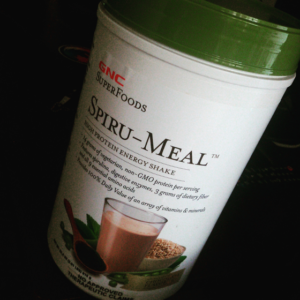 To simplify:
To simplify:
Food intake on MyFitnessPal, activity tracking on Fitbit. Do not use both for the same things or they will cancel each other out. When it comes to nutrition (including calories) allowance, I generally follow MFP.
Things to watch out for:
- Do not overdo the exercise. If you are going to train one muscle group, train a different set of muscles the next day. YOU MUST SCHEDULE REST DAYS. (Yes, they can be “active” rest days.) More about this in another blog entry.
- Do not go waaaay under your calorie budget for prolonged periods of time. This will make your body go into starvation mode and you will gain weight.
- If you have injuries like I do, do not jump into a high intensity work out. I did an extensive search on YouTube for “low impact knee injury workout” and got a lot of video results that I rotate every day. Include joint-strengthening exercises if you have joint issues. I DO NOT RUN.
- If you’re a woman, there are a few days where you will gain weight no matter what you do: before your menstrual period.
- Water. Water. Lots of water. My normal water consumption per day is 3.5L. But when my Fitbit activity goes on overdrive or I’ve had too much sodium, I could drink up to about 5L. Ironically, water also helps you shed water weight.
As of this writing, I am 0.4lbs away from my target weight after roughly one month of nutrition watching. I am still considering if I should go one or two pounds lower so I can make room for additional muscle weight when I start toning them. I am stronger, happier (a lot busier, but more cheerful about my day-to-day activities), and more importantly, no longer suffering from the usual ailments (ulcer, dysuria). Oh and yeah, I rescued my old pants from being thrown away, yay. That saves my wallet from having to change my entire wardrobe. My only problem now is the fact that some of my favorite dresses no longer fit me (and I will have to spend for their alterations).
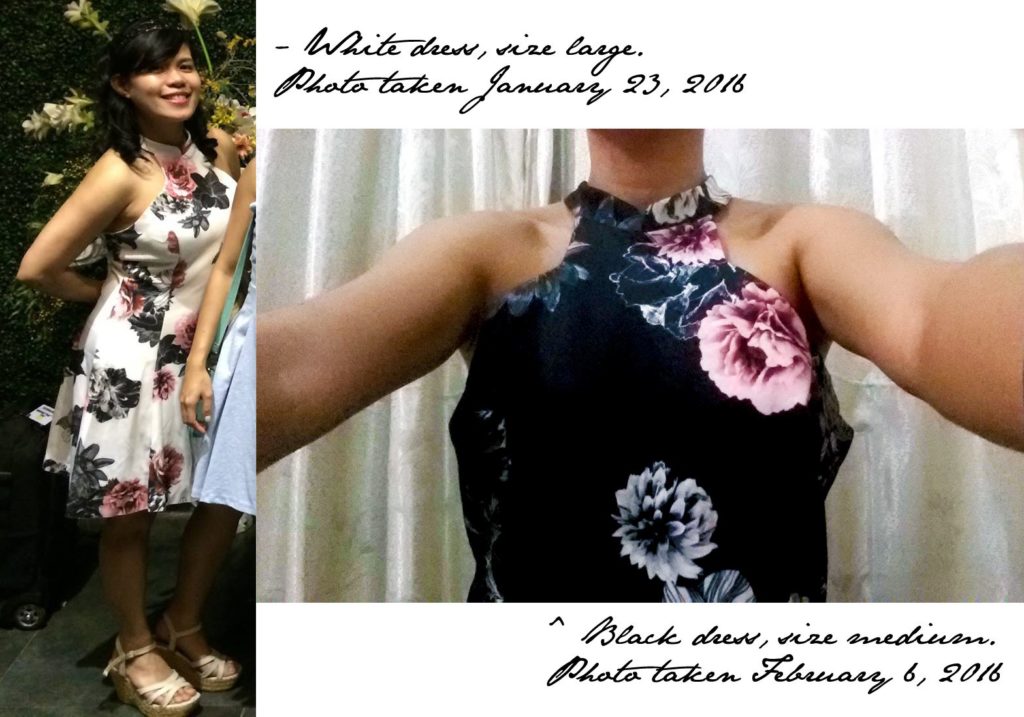
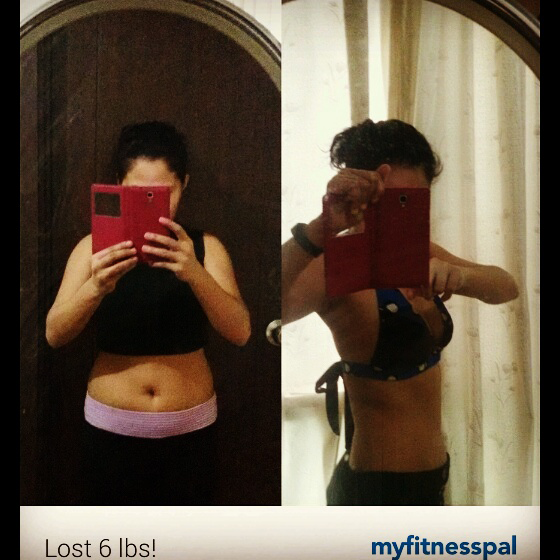
Leave a Reply